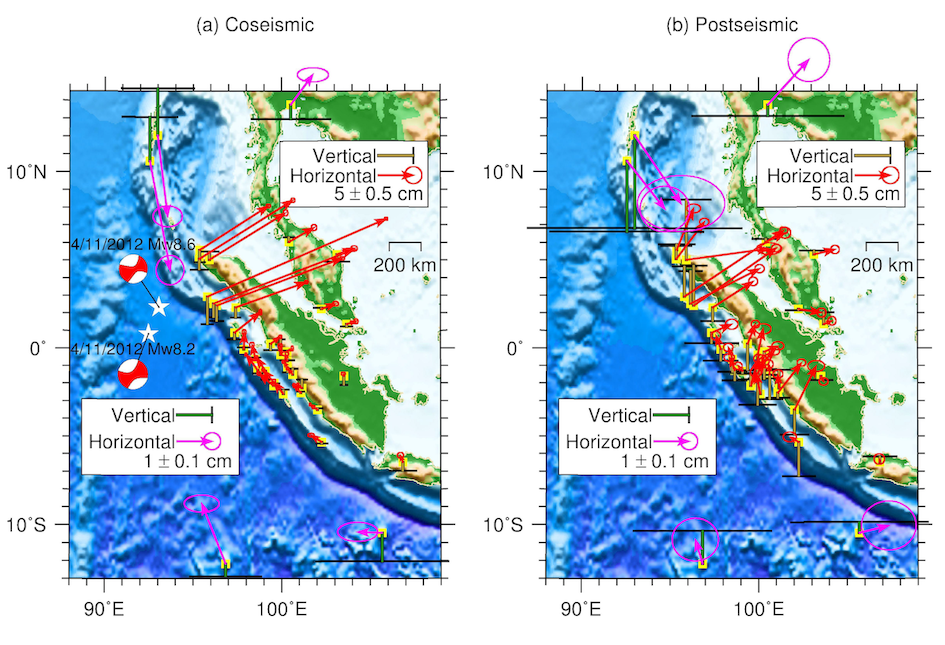


We optimized a three dimensional viscoelastic finite element model to study the postseismic deformation of the 2010 Mw8.8 Maule earthquake. We processed more than 80 continuous GPS time series. We first correct the time series for the pre-earthquake trends, seasonal and secular motions. Then we fit the post-earthquake time series with logarithmic and exponential functions. At last, we calculate the postseismic displacements at any given time window from the fitted curve. The preferred model reproduces the overall pattern of the postseismic GPS observations at different time windows. This work was published on Acta Seismologica Sinica. 张懿行, 胡岩, Segun Steven Bodunde (20
Read More
Global Positioning System observations in Southeast Alaska show evidence for interannual variations in uplift rates, which are consistent with an acceleration of mass loss rates across the region from the 1990s to 2012. We constructed an updated regional loading model based on updated twentieth century average deglaciation estimates. This model features a larger mass loss rate overall than the model used in previous studies. We adopted a viscosity model with an upper and lower mantle viscosity from VM5a but with a low viscosity asthenosphere as in previous regional studies. We varied the asthenospheric thickness, asthenospheric viscosity, and lithospheric thickness to fi
Read More
The concept of a weak asthenospheric layer underlying Earth’s mobile tectonic plates is fundamental to our understanding of mantle convection and plate tectonics. However, little is known about the mechanical properties of the asthenosphere (the part of the upper mantle below the lithosphere) underlying the oceanic crust, which covers about 60 per cent of Earth’s surface. Great earthquakes cause large coseismic crustal deformation in areas hundreds of kilometres away from and below the rupture area. Subsequent relaxation of the earthquake-induced stresses in the viscoelastic upper mantle leads to prolonged postseismic crustal deformation that may last several decades and
Read MoreCopyright © Geodynamics Research Center,USTC/DSEL. All Rights Reserved.